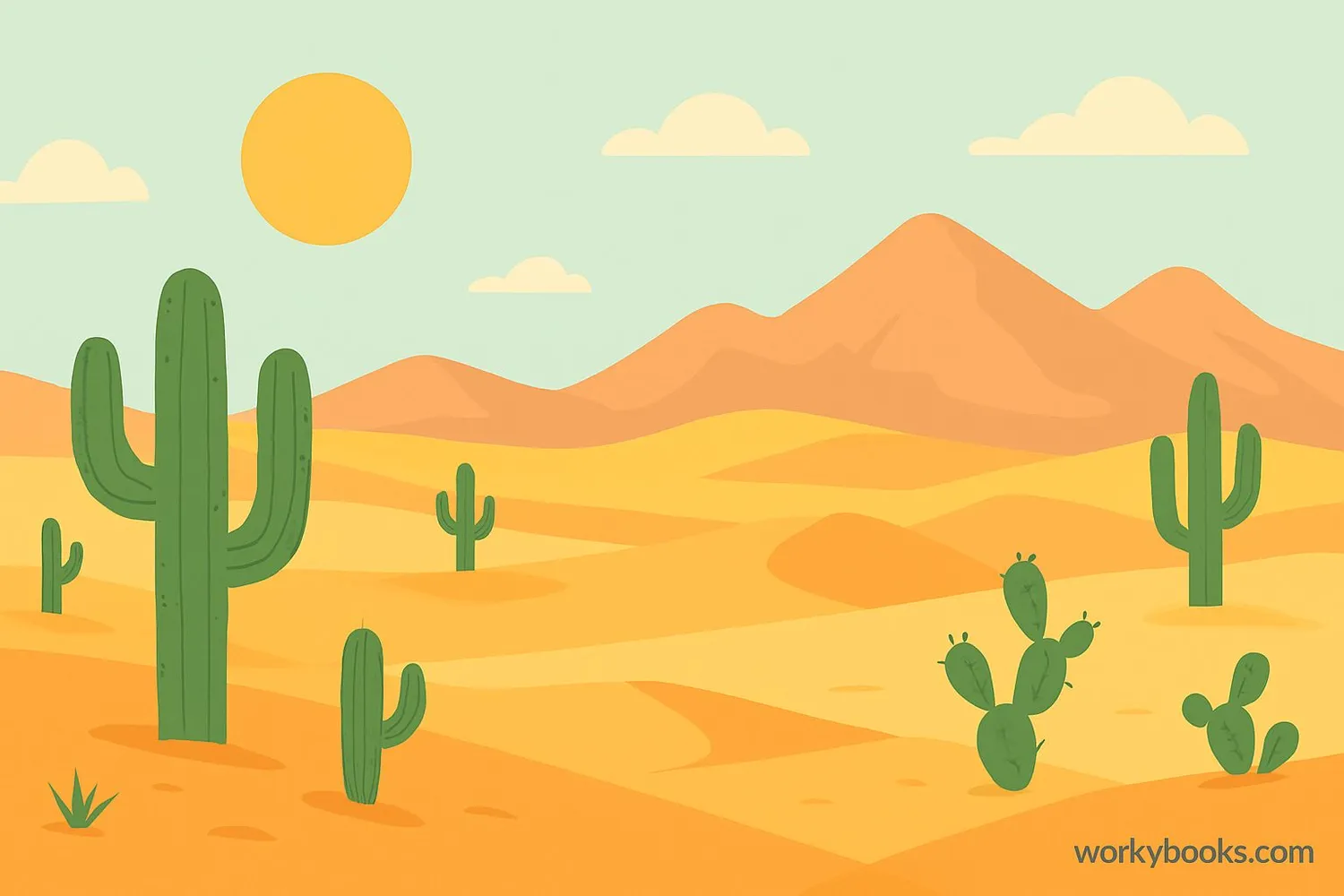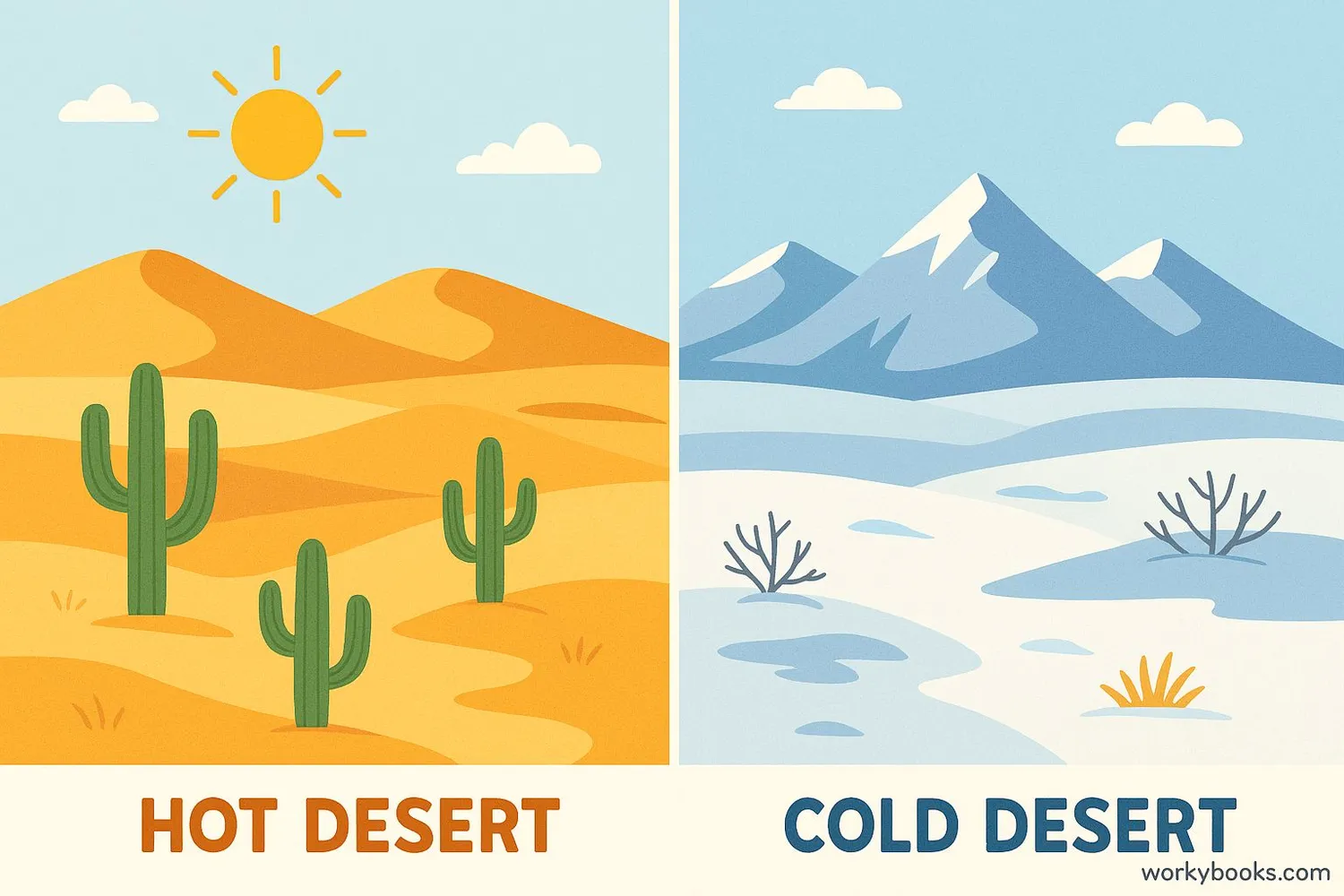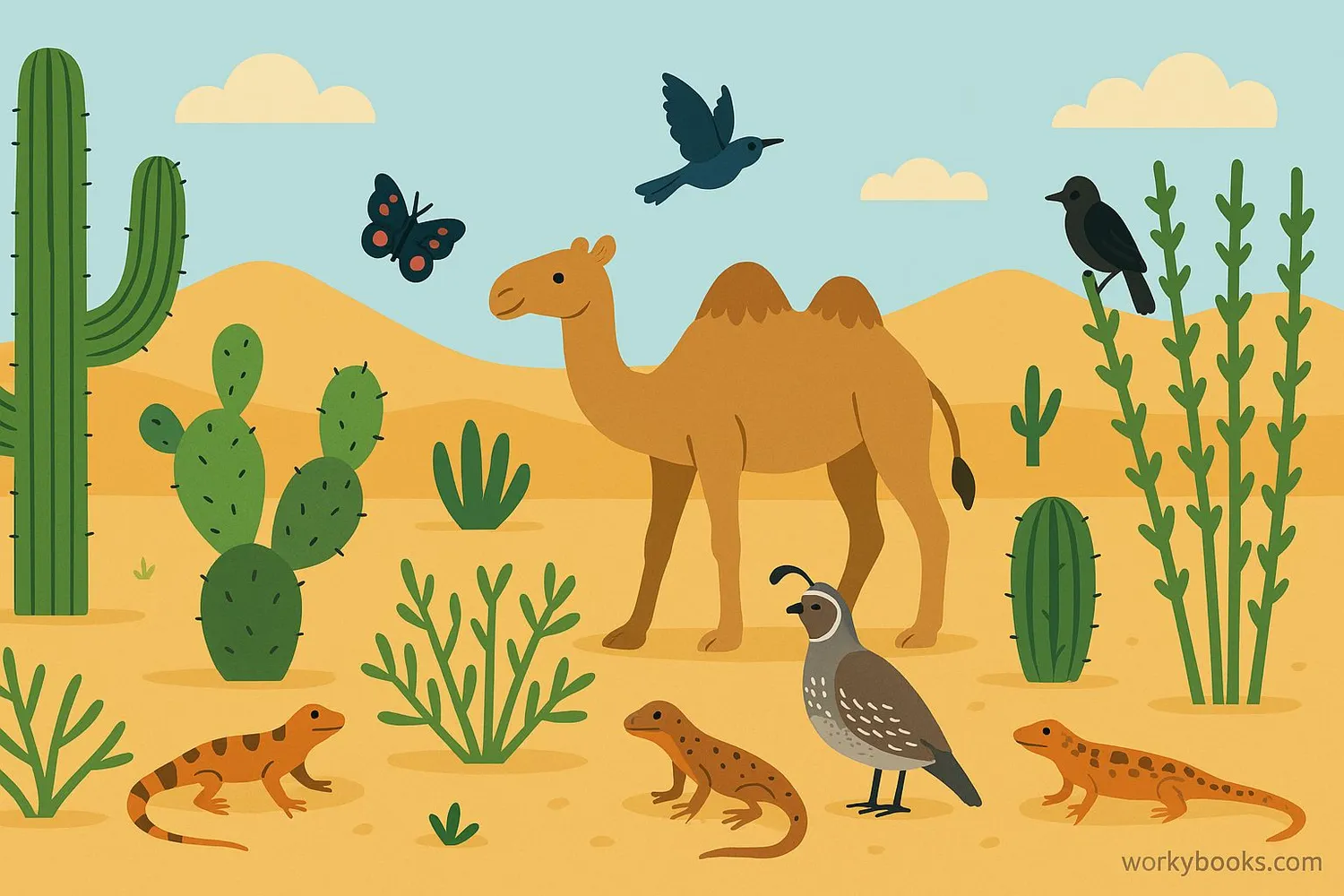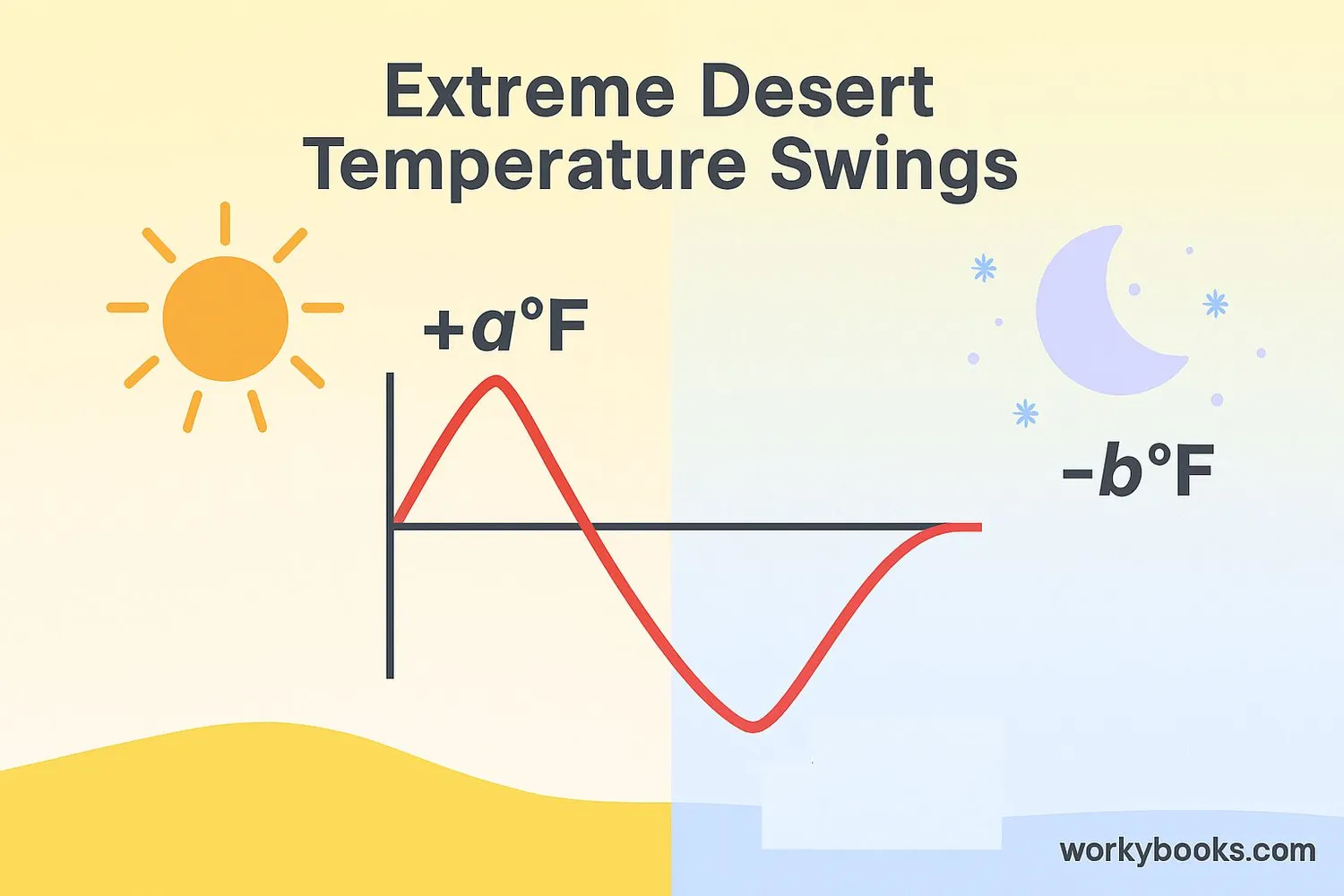Desert Climate - Definition, Examples, Quiz, FAQ, Trivia
Discover how deserts form and the amazing life that survives in these dry places!
What is Desert Climate?

A desert climate is a type of arid climate where there is very little rainfall throughout the year. Deserts are some of the driest places on Earth, receiving less than 10 inches (25 centimeters) of rain annually.
Deserts aren't just hot sandy places - they can be cold too! What makes a desert special isn't just temperature, but the lack of moisture. Desert air is very dry, which means it has very little water vapor. This dryness affects everything from how hot it gets during the day to how cold it becomes at night.
Did You Know?
About one-third of the Earth's land surface is desert or semi-desert! The largest hot desert is the Sahara in Africa, which is almost as big as the United States.
Types of Deserts

Deserts come in different types based on their temperature and location. The main types are:
Hot Deserts
Found near the equator, with very high daytime temperatures
Cold Deserts
Found in higher latitudes or altitudes, with cold winters
Coastal Deserts
Located near coasts where cold ocean currents prevent rainfall
Rain Shadow Deserts
Form on the leeward side of mountains where air loses moisture
Hot deserts, like the Sahara in Africa or the Sonoran in North America, have extremely high temperatures during the day but can get quite cool at night. Cold deserts, like the Gobi in Asia or the Great Basin in North America, have cold winters with snow and hot summers.
Climate Classification
Scientists use the Köppen climate classification system to categorize deserts as "BWh" for hot deserts and "BWk" for cold deserts.
Desert Ecosystem

Despite the harsh conditions, deserts are home to specially adapted plants and animals that have found clever ways to survive with little water.
Plant Adaptations
Deep roots, water storage (like cacti), small or no leaves to reduce water loss
Animal Adaptations
Nocturnal activity, water conservation, burrowing, specialized kidneys
Water Strategies
Getting water from food, drinking infrequently but in large amounts
Desert plants like cacti have thick, fleshy stems that store water and spines that protect them from animals seeking moisture. Animals like the fennec fox have large ears to release heat, and kangaroo rats can survive without ever drinking water—they get all the moisture they need from their food!
Desert Temperature & Precipitation

Deserts have some of the most extreme temperature ranges on Earth. Without moisture in the air to trap heat, temperatures can swing dramatically between day and night.
Daytime Heat
In hot deserts, daytime temperatures often exceed 100°F (38°C)
Nighttime Cold
The same desert can drop below 50°F (10°C) at night
Little Rainfall
Most deserts receive less than 10 inches of rain per year
This extreme temperature change happens because dry air doesn't hold heat well. During the day, the sun's rays heat the ground quickly. At night, that heat escapes rapidly back into the atmosphere without water vapor to trap it.
Desert precipitation is not only scarce but also unpredictable. Some deserts might not see rain for years, then experience a sudden downpour that causes flash floods. When rain does come, many desert plants and animals have special adaptations to make the most of it quickly.
Desert Climate Knowledge Check
Test what you've learned about desert climates with this quiz!
Frequently Asked Questions
Here are answers to common questions about desert climates:
Interesting Desert Facts
Discover some amazing facts about desert climates!
Extreme Temperatures
The highest temperature ever recorded on Earth was 134°F (56.7°C) in Death Valley, California, a desert area. The lowest temperature in a cold desert was -128.6°F (-89.2°C) in Antarctica.
Ancient Deserts
The Sahara Desert wasn't always dry! About 10,000 years ago, it was a lush grassland with lakes and rivers. Climate changes transformed it into the desert we know today.
Long-Lived Plants
Some desert plants live for centuries. The creosote bush can live for over 10,000 years by cloning itself, making it one of the oldest living organisms on Earth.
Water Underground
Many deserts have vast underground water reserves called aquifers. These were filled thousands of years ago when the climate was wetter and are now "fossil water" that doesn't replenish.





